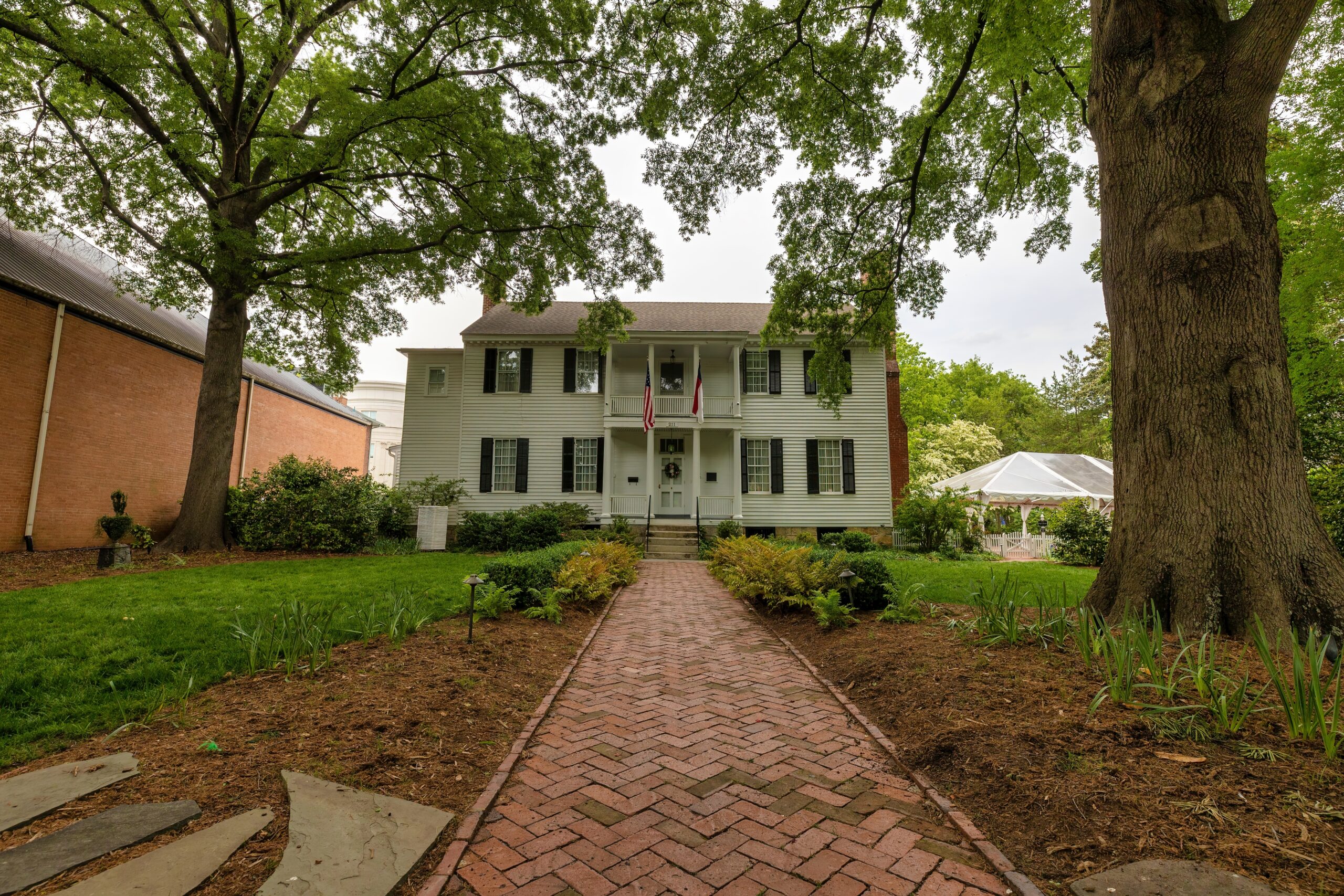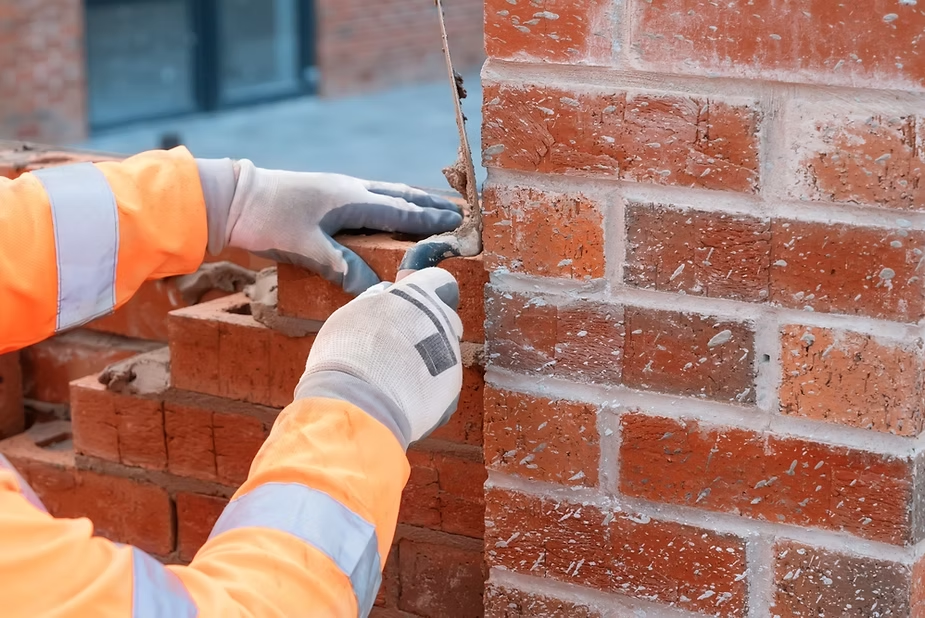You want the charming brick walkway that winds through your yard to be the focal point of your outdoor area. But as time passes, the deep color starts to fade, the surface looks dulled, and green patches begin to appear along the edges. Your entire landscape’s atmosphere can be changed from welcoming to ignored by a neglected brick path.
Reviving your walkway is easier than you might think. Brick surfaces can be restored to a clean, beautiful, and sharp appearance with a few simple tools and a little elbow grease. This guide will cover everything from easy cleanups to removing tough stains, whether you’re getting ready for visitors or just want to clean up for yourself.
Why It Pays to Keep Brick Walkways Clean
Despite their resilience to weather and durability, bricks can still be neglected. Frequent cleaning helps maintain your walkway’s safety and foundational strength as well as its aesthetic appeal. Consider how many people walk along your walkway. Over time, dirt, grit, and debris wear down the brick’s surface and the mortar that holds it all together like sandpaper.
Moisture-loving moss, mildew, and algae will start to grow if left unchecked, especially in damp or shaded areas. These growths are not only unappealing, but they can also cause dangerously slick areas, particularly after rain. Regular cleaning removes that buildup before it becomes dangerous or causes long-term damage to your walkway.
Not to mention the larger picture: neat, well-kept brick immediately improves curb appeal. Even the most beautiful home can appear worn out by a neglected path. A new walkway, on the other hand, instantly improves the appearance of your exterior and elevates the overall feel of your outdoor area.
Simple Tools, Big Results
To clean your brick walkway, you don’t need commercial-grade chemicals or industrial equipment. You can find the majority of what you need in your garage, and the rest can be purchased at any home improvement store.
Here’s your tool checklist:
- An excellent tool for removing loose dirt, leaves, and debris from the surface is a stiff-bristled broom or leaf blower
- A garden hose with spray nozzle offers a gentle yet efficient rinse
- Your base for combining the cleaning solution is a bucket of warm water
- A mild dish soap or pH-neutral cleaner is ideal for cutting through dirt without damaging the brick or mortar
- A deck brush or push broom with soft bristles is excellent for cleaning without causing scratches or removing mortar from between bricks
- Work gloves are a must for protecting your hands from dirt and cleaning products
Steer clear of harsh cleaners and metal brushes as they can erode the mortar joints over time, remove the brick’s protective layer, or diminish its color. If you’re looking to transform your outdoor space further with a patio remodel in Montgomery County, PA, our team can help you boost both comfort and curb appeal.
Step-by-Step: How to Clean Your Brick Walkway
1. Clear the Area
Remove everything on or around your walkway first. This includes patio furniture, garden tools, outdoor rugs, potted plants, and any other décor that might block your view. You want to work on a clear surface that is empty of any obstacles. Moving these objects allows you to clean evenly and thoroughly, regardless of the temptation to just clean around them. Additionally, you won’t unintentionally spill dirty water on your furnishings or return dirt to recently cleaned bricks.
2. Sweep It Down
After that, sweep the entire walkway to get rid of any loose dust, dirt, leaves, or twigs. A leaf blower can speed up this step for larger areas or hectic schedules. It’s important to sweep before adding water. Ignoring it will make the job messier and more difficult than necessary because all that dry debris will turn to mud the moment it gets wet. Dirt tends to collect and hide in corners and seams, so pay attention to these areas.
3. Rinse It Off
Take out your hose and thoroughly rinse the walkway. Choose a spray setting that is moderately strong enough to remove grit without causing mortar damage. This stage prepares the surface for scrubbing and helps get rid of any remaining dust. Additionally, it makes the actual cleaning process much simpler by removing dirt that has become lodged between bricks. Consider it a pre-deep cleaning rinse.
4. Mix a Gentle Cleaning Solution
Acids and industrial cleaners are unnecessary because they can weaken or discolor bricks. Remain straightforward and secure by combining a few squirts of mild dish soap with warm water. If you would rather, you can also use a pH-neutral outdoor surface cleaner. Some people experiment with powdered laundry detergent, but if it isn’t completely rinsed, it can leave a residue. When in doubt, dish soap works well, is easy to rinse off, and is gentle.
Alternative fixes to specific problems:
- Dish Soap: For mild surface grime and general dirt
- pH-neutral Brick Cleaner: Perfect for more thorough cleaning without causing surface damage
- White Vinegar and Water (1:1): Excellent for light mildew or algae in damp, shaded spots
5. Scrub With Care
Scrub the walkway in small sections using a deck brush or soft-bristled broom dipped in the soapy solution. Apply medium pressure evenly. The goal is to remove dirt without causing surface damage or disturbing the mortar. Pay attention to places that are frequently visited, close to entrances, or where obvious stains are present. Don’t scrub too hard; instead, let the soap do the majority of the work. Give the solution a few minutes to sit before scrubbing again if you run into resistance.
6. Final Rinse
After cleaning the walkway, use your hose to rinse everything clean. To allow water to naturally flow downward and away from the area, begin at the highest point of the path. Rinse well because soap residue can leave a slippery film and attract more dirt. Rinse repeatedly until the water runs clear and there are no more suds.
7. Let It Dry
The last step is air drying. Give it a few hours to dry completely before rushing to put everything back. Furniture can leave stains or collect moisture underneath, and walking on wet bricks can cause dirt to be tracked back onto the surface. Check the walkway after it has dried. You’ll see any areas that were overlooked or that might require minor repairs or additional cleaning. Go ahead and reposition your outdoor furniture after that, and take satisfaction in the improved appearance.
Tackling Common Brick Stains
Certain stains require more care even after frequent cleanings. Here’s how to handle common stains:
- Oil and Grease: Brick pores can absorb grease from vehicles or grills. To absorb the residue from recent spills, scatter cornstarch or unscented cat litter over the area. Sweep it away after a few hours of sitting. Use a brick-safe degreaser for more stubborn stains. Always spot-test first and apply as directed by the product’s instructions.
- Rust Marks: Rust stains from garden tools or furniture can be difficult to remove. To break down rust, look for cleaners that contain oxalic acid. Always conduct your initial testing in a small, obscure area because some solutions can discolor bricks if applied for an extended period of time.
- Moss, Mold, and Mildew: You may notice green or black accumulation if areas of your walkway remain wet or shaded. Usually, a 1:1 solution of white vinegar and water works well. After applying the solution and letting it sit for ten to fifteen minutes, scrub and rinse. Consider using an outdoor mold and mildew remover designed especially for brick if there is a lot of buildup. Steer clear of bleach; it can damage the surface and doesn’t always address the underlying moisture issue.
Should You Use a Pressure Washer on Brick?
Because of their speed, pressure washers can be tempting, but they’re not always practical. You run the risk of damaging surrounding plants, chipping bricks, or dislodging mortar if the PSI is too high or the nozzle is too narrow.
If you decide to use one, take these precautions:
- Make use of a wide-angle nozzle
- Don’t exceed 1,500 PSI in pressure
- Keep the wand at least 12 inches away from the ground
- To prevent concentrated wear, keep the spray moving
Go manual whenever possible, or seek assistance from a professional. If you’re renovating additional outdoor surfaces, consider stamped concrete in Lehigh Valley, PA for a stylish, durable finish that complements your landscape design.
Keep Your Brick Walkway Looking Its Best
A few routines can help you maintain a clean walkway throughout the year:
- Frequent Sweeping: Prevents the accumulation of dirt and leaves.
- Clearing Leaves Quickly: Tannin stains from wet leaves are difficult to get rid of, especially in the fall.
- Steer Clear of Salt in the Winter: For traction, use sand instead. Brick and mortar can deteriorate due to salt.
- Every Few Years, Apply a Sealant: A brick sealer aids in preventing fading, stains, and moisture damage.
By making these simple changes, you can extend the lifespan of your walkway and lessen the necessity of deep cleaning.
Want Help With Brick Walkway Restoration or a Patio Makeover?
Q&E Keystone Masonry specializes in custom brickwork, walkway restoration, and patio remodels designed to boost curb appeal and long-term durability. Our knowledgeable staff can realize your vision, whether you’re looking to improve your entire outdoor space or just plan routine maintenance. We can assist you in creating a home exterior that is more aesthetically pleasing and clean. Get in touch with us today to improve the curb appeal of your house and restore your brick walkway!




